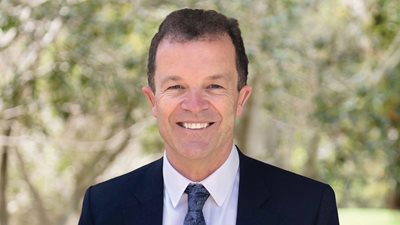Serena Copley, Liberal for Kiama. Click here to learn more.
$883 million more reasons to work in the bush
The NSW Government will implement a major regional health workforce incentive scheme in the largest shakeup of its kind ever undertaken in the state.
The scheme will be delivered alongside new training and recruitment pathways to build a pipeline of regionally based workers and futureproof healthcare in the bush.
Deputy Premier and Minister for Regional NSW Paul Toole said $883 million will be spent over the next four years to attract and retain staff in rural and regional NSW by transforming the way health clinicians are incentivised in the bush.
“This package delivers on the NSW Government’s commitment to strengthen the regional health workforce, ensuring that more than three million people who live, work and play in rural and regional NSW continue to have access to high quality healthcare well into the future,” Mr Toole said.
“These incentive packages will be tailored to not only attract more clinicians to these services but help retain those hard working staff and encourage them to put down roots.”
The package will target critical and hard to fill roles to ensure the operation of regional health facilities, including nurses and midwives, paramedics, pathologists and scientific staff, pharmacists and allied health professionals, as well as support and ancillary staff.
Minister for Regional Health Bronnie Taylor said the package will be used to deliver innovative, bespoke incentives for staff so they move to or stay in regional NSW.
“Hard-to-fill, critical roles in rural and remote locations can be incentivised by offering health workers recruitment and retention incentive packages worth up to $10,000 per year plus assistance with accommodation and relocation and some other non-financial incentives,” Mrs Taylor said.
Incentives can include a range of benefits, such as salary boost, sign on bonuses, retention payments, additional leave, assistance with childcare expenses, assistance with transport and housing support, and access to training and education.
In addition to the incentives package, a range of targeted measures are being funded which will support the NSW Government in building a pipeline of future nurses, doctors and other clinical staff who are based in the bush and have the skills, confidence and expertise needed to work in regional health care facilities.
Mrs Taylor said one of these measures is the expansion of training positions for nurse practitioner roles in rural locations that struggle to attract doctors.
“These are highly skilled nursing professionals that can operate autonomously in complex clinical settings. The expansion of these training positions will see people in rural NSW receiving the highest level of quality care and a brighter future in terms of health outcomes,” Mrs Taylor said.
The $883 million investment will include funding for:
- Tailored incentive programs for healthcare staff to take up and retain positions in regional, rural and remote NSW – which can include a tailored incentive package of up to $10,000 plus additional leave, relocation reimbursement, professional development and study assistance;
- Increased training positions for nursing graduates, nurse practitioners and medical interns;
- Expanding rural generalist and procedural training positions;
- Career development and secondment opportunities for healthcare workers based in regional, rural and remote NSW, including for those based in metropolitan areas to ‘try out’ working in regional NSW;
- Increased numbers of Aboriginal nurse cadetships, and
- HECS incentive package for allied health professionals.
Treasurer Matt Kean said the rural and regional workforce boost forms part of the NSW Government’s overall record $4.5 billion investment in more than 10,000 health staff.
“We believe that access to the best quality healthcare shouldn’t be a postcode lottery. That’s why we’re recruiting 10,148 full-time equivalent staff right across NSW over the four years in what is the nation’s largest-ever health workforce boost, and 3,800 of these positions will be in regional areas,” Mr Kean said.
Related Articles: #Budgetandeconomy | #RegionalNSW


